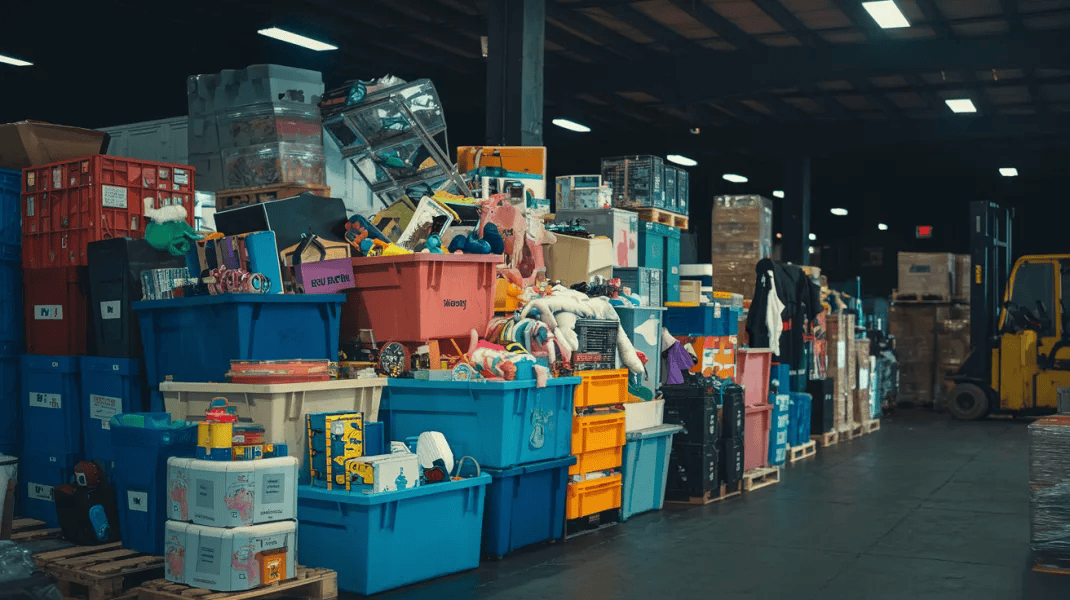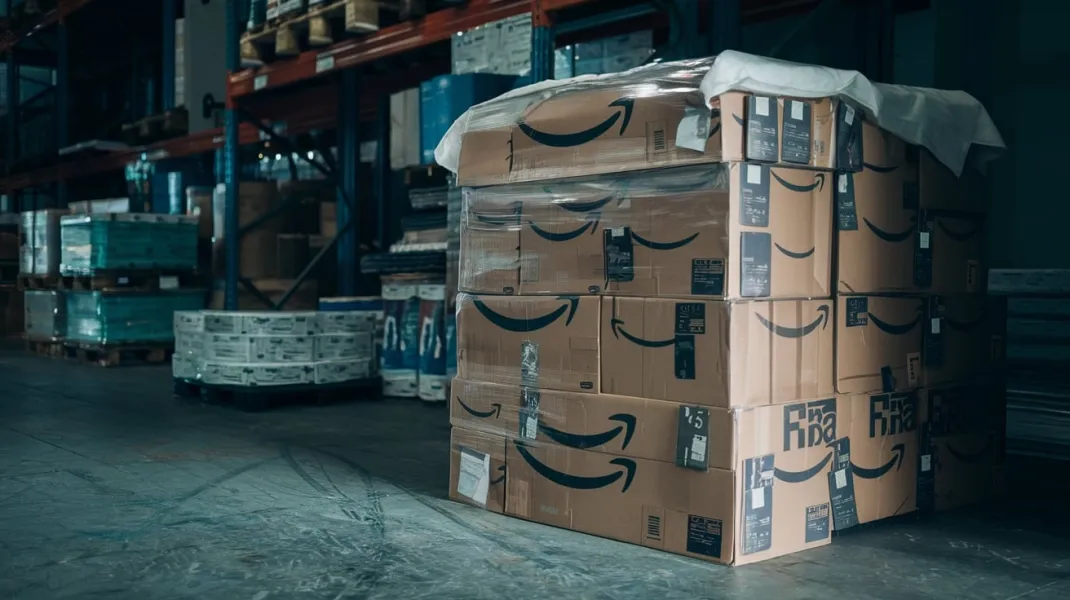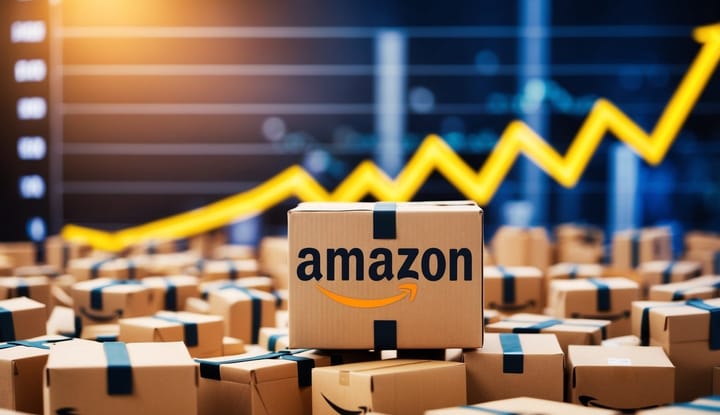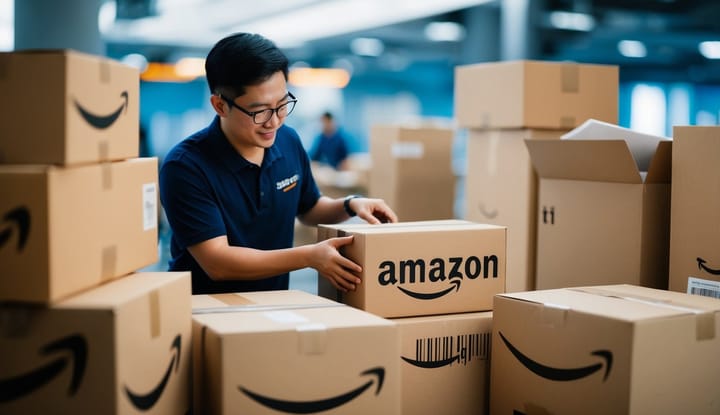Why Do 90% of Amazon FBA Sellers Fail? Key Insights for Success

Many people dream of starting an Amazon FBA business, but success is not guaranteed. Amazon's marketplace is competitive, and not all sellers achieve their goals.

The main reasons for failure include unrealistic expectations about startup costs and not reinvesting profits. Some new sellers underestimate the financial resources needed to launch and sustain their businesses. Others may not fully grasp the complexities of inventory management, marketing, and customer service required for success on Amazon.
Despite these challenges, selling on Amazon can still be worthwhile for those who approach it strategically. Successful sellers often have the time, tools, and information needed to thrive in the marketplace. They also understand the importance of adapting to changes in competition and consumer demand.
Key Takeaways
- Most Amazon third-party sellers use FBA, but many face profitability challenges
- Unrealistic expectations and poor financial planning are common reasons for failure
- Success on Amazon requires time, resources, and a strategic approach
Understanding Amazon FBA
Amazon FBA offers sellers a way to outsource order fulfillment. It has different business models that sellers can use to grow their online retail operations.
The Basics of FBA
FBA stands for Fulfillment by Amazon. With this program, sellers send products to Amazon warehouses. Amazon then stores, picks, packs, and ships items when customers place orders. FBA handles customer service and returns too.
Sellers pay fees for storage and fulfillment. In return, they get access to Amazon's large customer base. FBA products are eligible for Prime shipping, which can boost sales.
FBA saves sellers time on shipping and customer service. This lets them focus on sourcing products and growing their business. But it also means less control over inventory and higher costs than self-fulfillment.
Different FBA Business Models
Sellers can use FBA with various business models:
• Private Label: Create a brand and sell unique products
• Wholesale: Buy in bulk from brands and resell on Amazon
• Retail Arbitrage: Buy discounted items from stores to resell
• Online Arbitrage: Source products from other websites to resell
• Dropshipping: List products without holding inventory
Each model has pros and cons. Private label offers the most control but needs more startup funds. Arbitrage can be low-cost to start but harder to scale. Wholesale sits in the middle, with steady supply but thinner margins.
Sellers often start with one model and branch out as they learn. The best choice depends on goals, skills, and resources. Many combine models to diversify their Amazon business.
Challenges in Running an FBA Business

Amazon FBA sellers face many hurdles. These include tough competition, money issues, and tricky shipping tasks. Let's look at the main problems FBA sellers must deal with.
Navigating Market Competition
The Amazon marketplace is packed with sellers. Many offer similar products. This makes it hard to stand out. Sellers must find unique items or improve existing ones. They need to set fair prices while still making money.
Sellers must watch what others do. They need to spot trends fast. Being first to sell a hot new item can lead to big wins. But it's risky too.
Dealing With Cash Flow and Fees
Money management is crucial in FBA. Amazon takes a cut of each sale. They also charge for storage and other services. These fees add up fast.
Sellers need cash to buy stock. But they don't get paid right away when items sell. This gap can cause problems. Some sellers run out of money to restock.
Profit margins can be slim. Price wars with other sellers make this worse. Sellers must track all costs closely. They need to find ways to save money without cutting quality.
Overcoming Logistic Hurdles
Getting products to Amazon's warehouses can be hard. Sellers must pack items just right. If not, Amazon may reject them or charge extra fees.
Shipping costs eat into profits. Sellers must find cheap, reliable ways to send goods. This gets harder when sourcing from far away.
Stock levels need careful watching. Running out means lost sales. Too much stock leads to high storage fees. Sellers must predict demand well.
Returns and damaged goods cause headaches too. Sellers lose money on these items. They must have a plan to handle them fast and keep customers happy.
Strategic Approaches to Selling on Amazon
Success on Amazon FBA relies on smart tactics. Sellers need to pick the right products, build a strong brand, and manage inventory well. These key areas can make or break an Amazon business.
Effective Product Research and Selection
Product research is vital for Amazon FBA sellers. They must find items with good profit margins and high demand. Keyword research helps spot popular products. Sellers use tools to check sales volume and competition.
Many look at bestseller lists and trend reports. They also study customer reviews to find product gaps. Smart sellers test new items with small orders first. This cuts risk and lets them scale up winners.
Maximizing Brand Presence and Customer Service
A strong brand helps sellers stand out on Amazon. They need clear, eye-catching product photos and descriptions. Many use A+ content to showcase their brand story.
Good customer service is key. Quick replies to questions and issues build trust. Some sellers use chatbots to help with common queries. Positive reviews are gold on Amazon. Sellers often follow up with buyers to ask for feedback.
Inventory Management and Sales Strategies
Good stock control is crucial. Sellers must balance having enough stock without tying up too much cash. Many use software to track sales and predict demand. This helps avoid stockouts and excess inventory.
Influencer marketing can boost sales. They test different ad types and budgets. Some offer deals and coupons to drive sales. Pricing strategy is important too. Sellers must price competitively while staying profitable.
Financial Aspects of Amazon Selling
Selling on Amazon FBA involves several key financial factors. Sellers need to understand fees, budget for marketing, and manage profit margins to succeed.
Understanding Amazon's Fee Structure
Amazon charges various fees to FBA sellers. Referral fees range from 8% to 15% of the item price. FBA fees cover storage and fulfillment costs. These vary based on item size and weight. Storage fees increase during peak seasons like Q4. Long-term storage fees apply to items in warehouses over 365 days. Sellers must factor these costs into their pricing strategy.
Amazon also offers fee discounts for high-volume sellers. The FBA Small and Light program can reduce fees for small, low-cost items. Sellers should review fee changes regularly, as Amazon updates them yearly.
Calculating Profit Margins for Growth
Healthy profit margins are vital for Amazon FBA success. Most sellers aim for 20-30% net profit margins. To calculate this, subtract all costs from the sale price. Costs include:
- Product cost
- Amazon fees
- Shipping to Amazon
- Returns and refunds
Critical Mistakes to Avoid

Many Amazon FBA sellers stumble due to preventable errors. Being aware of common pitfalls can help new sellers avoid costly missteps and boost their chances of success.
Market Research Missteps
Proper market research is key to Amazon FBA success. Sellers often rush into saturated niches without studying demand or competition. This leads to poor sales and wasted inventory.
Smart sellers use tools to analyze product trends and competition. They look for items with steady demand and reasonable competition. Ignoring seasonal trends can also hurt profits.
Pricing mistakes are common too. Some sellers set prices too high, while others go too low to compete. Both approaches can kill profits. Successful sellers find the sweet spot between competitive pricing and healthy margins.
Inventory Oversights
Managing inventory is tricky for new Amazon FBA sellers. Overstocking ties up cash and leads to high storage fees. Understocking causes stockouts and lost sales.
Sellers should start small and scale up slowly. This helps avoid costly inventory mistakes. Using Amazon's sales data and forecasting tools is crucial.
Some sellers forget about long-term storage fees. These can eat into profits if inventory doesn't sell quickly. Smart sellers plan ahead and remove slow-moving stock before fees kick in.
Quality control is vital too. Selling subpar products leads to bad reviews and account problems. Successful sellers inspect samples and monitor product quality closely.
Account Management Errors
Neglecting Amazon account health is a big mistake. Sellers must follow Amazon's rules closely to avoid suspensions.
Common errors include:
- Shipping delays
- Poor customer service
- Inaccurate product listings
- Violating Amazon policies
Sellers should check their account health regularly. Addressing issues quickly helps prevent serious problems.
Many new sellers also ignore their finances. Tracking costs, fees, and profits is essential. Without proper bookkeeping, it's hard to know if a business is truly profitable.
Frequently Asked Questions

Many factors influence the success or failure of Amazon FBA sellers. Key challenges include marketplace changes, competition, common mistakes, and effective strategies.
Q: What challenges contribute to the difficulties faced by new Amazon FBA sellers?
New Amazon FBA sellers often struggle with high startup costs. Many underestimate the money needed to launch and maintain their business. Inventory management can also be tricky for beginners.
Navigating Amazon's complex rules and policies is another hurdle. New sellers may find it hard to stand out in a crowded marketplace. Building a customer base takes time and effort.
Q: How do changes in marketplace policies impact Amazon FBA seller success rates?
Amazon frequently updates its rules and algorithms. These changes can affect product rankings and visibility. Sellers who don't adapt quickly may see sales drop.
New fees or restrictions can cut into profits. Policy shifts may require sellers to adjust their strategies. Staying informed and flexible is key to success on the platform.
Q: What factors determine the success of an Amazon FBA business?
Product selection is crucial. Successful sellers choose items with good demand and profit margins. Effective marketing and SEO boost product visibility.
Excellent customer service helps build positive reviews. Smart pricing strategies balance competitiveness and profitability. Efficient inventory management prevents stockouts and excess stock.
Q: How does competition affect the success of Amazon FBA sellers?
High competition can drive prices down and squeeze profit margins. New sellers may struggle to compete with established brands. Standing out in a crowded market requires unique selling points.
Some niches become oversaturated, making it hard to succeed. Sellers who find less competitive categories often fare better. Adapting to market changes is essential in a competitive landscape.
Q: What are common mistakes that lead to the failure of Amazon FBA stores?
Poor product research is a major pitfall. Some sellers choose items with low demand or too much competition. Inadequate pricing strategies can lead to losses.
Neglecting customer service hurts ratings and sales. Mismanaging inventory causes stockouts or excess costs. Failing to comply with Amazon's rules can result in account suspension.
Q: What strategies do successful Amazon FBA sellers employ that others do not?
Successful sellers invest in thorough market research. They focus on building a strong brand identity. Effective use influencer marketing can boosts visibility.
Diversifying product lines reduces risk. Top sellers prioritize customer satisfaction and swift problem-solving. They stay up-to-date with market trends and Amazon policy changes.
Q: Why do so many Amazon sellers fail to succeed on the platform?
Many Amazon sellers fail due to a combination of factors, including insufficient market research, poor product selection, underestimating competition, inadequate inventory management, and lack of marketing expertise. The high failure rate is also attributed to unrealistic expectations and the competitive nature of the Amazon marketplace.
Q: What are some common mistakes new Amazon FBA sellers make?
Common Amazon FBA mistakes include not thoroughly researching products, poor inventory management, neglecting customer service, underestimating the importance of product listings and images, and failing to adapt to changes in Amazon's policies and algorithms.
Q: How can I improve my chances of success as an Amazon seller?
To succeed as an Amazon seller, focus on thorough market research, optimize your product listings, provide excellent customer service, manage inventory efficiently, and stay updated with Amazon's policies and best practices. Continuous learning and adaptation are key to long-term success.
Q: Is it still possible to start selling on Amazon FBA and be successful in today's competitive marketplace?
Yes, it's still possible to succeed as an Amazon seller, but it requires more strategy and effort than in the past. Focus on niche markets, differentiate your products, leverage Amazon's tools and services, and be prepared to invest time and resources into marketing and customer service to stand out in the competitive Amazon marketplace.
Q: What are the most important factors for creating a successful Amazon listing?
Key factors for a successful Amazon listing include high-quality product images, compelling titles, detailed and accurate product descriptions, relevant keywords, competitive pricing, and positive customer reviews. Ensure your listing clearly communicates the product's features and benefits to potential Amazon customers.
Q: What are the common reasons why people fail as Amazon FBA sellers?
Some common reasons for Amazon FBA failure include insufficient market research, poor product selection, inadequate pricing strategies, ineffective marketing, and underestimating the competition. Many new sellers also struggle with inventory management and fail to understand Amazon's complex policies and algorithms.
Q: How can I succeed as an Amazon seller and avoid common Amazon FBA mistakes?
To succeed as an Amazon seller, focus on thorough market research, choose products carefully, price competitively, and invest in effective marketing strategies. Learn Amazon's policies, optimize your product listings, and useinfluencer marketing to increase visibility. Continuously monitor your inventory and stay updated on industry trends to boost your Amazon sales and profits.
Q: Is starting an Amazon FBA business still profitable in today's market?
Yes, starting an Amazon FBA business can still be profitable, but it's more challenging than in the past due to increased competition. Success requires careful planning, a unique product strategy, and effective marketing. Sellers can increase their chances of success by focusing on niche markets and providing exceptional customer service.
Q: What are the key steps to set up a successful Amazon FBA business?
Key steps include creating a seller account, conducting thorough market research, selecting profitable products to sell on Amazon, sourcing quality inventory, optimizing product listings, and developing a solid marketing strategy. It's also crucial to understand Amazon's policies and use influencer marketing to drive traffic to your Amazon store.
Q: How important is product selection for Amazon FBA success?
Product selection is crucial for Amazon FBA success. Choose products with good profit margins, low competition, and steady demand. Conduct thorough research using tools like Amazon search analytics and competitor analysis. Remember that unique or innovative products often have a better chance of standing out in today's Amazon marketplace.
Q: What are some effective marketing strategies for Amazon FBA sellers?
Effective marketing strategies include optimizing product listings with relevant keywords, using high-quality images, leveraging influencer marketing, encouraging customer reviews, and creating engaging A+ content. Additionally, consider external marketing through social media, influencer partnerships, and email marketing to drive traffic to your Amazon product listings.
Q: How can I manage inventory effectively as an Amazon FBA seller?
Effective inventory management is crucial for Amazon FBA success. Use Amazon's forecasting tools to predict demand, set reorder points to avoid stockouts, and monitor sales velocity. Consider using automated inventory management software to streamline the process. Remember that Amazon takes care of storage and fulfillment, but you're responsible for maintaining optimal stock levels.
Q: Why is the Amazon FBA failure rate so high among new sellers?
The high Amazon FBA failure rate is primarily due to several factors. Many new sellers underestimate the complexity of running an Amazon business, lack proper market research, and face fierce competition from millions of sellers. Additionally, poor inventory management, inadequate pricing strategies, and insufficient marketing efforts contribute to the high failure rate.
Q: What are the common mistakes that lead to Amazon FBA failure?
Common mistakes that lead to Amazon FBA failure include choosing oversaturated product niches, underestimating startup costs, poor inventory management, inadequate product research, ineffective pricing strategies, and neglecting customer service. Many FBA sellers also fail to understand Amazon's policies and algorithms, which can lead to account suspensions or poor visibility in search results.
Q: How can a new seller increase their chances of success on Amazon FBA?
To increase chances of success, new sellers should thoroughly research their product niche, understand their target audience, and create a solid business plan. It's crucial to manage FBA inventory effectively, optimize product listings, and implement a strong marketing strategy. Additionally, staying updated with Amazon's policies, continuously improving product quality, and providing excellent customer service can significantly boost success rates.
Q: Is it still profitable to be an Amazon FBA seller in today's market?
Yes, it can still be profitable to be an Amazon FBA seller, but success requires careful planning and execution. While competition has increased, Amazon's market continues to grow, offering opportunities for sellers who can differentiate themselves. By focusing on unique products, efficient operations, and effective marketing, sellers can still achieve success and profitability on the platform.
Q: What advantages does Amazon FBA provide for sellers?
Amazon FBA provides several advantages for sellers. It allows sellers to store their products in Amazon's warehouses, handles order fulfillment and shipping, and offers customer service support. This frees up sellers to focus on product sourcing and marketing. FBA products are also eligible for Prime shipping, which can increase visibility and sales. Additionally, Amazon handles returns and refunds, simplifying these processes for sellers.
Q: Are FBA courses worth the investment for new Amazon sellers?
FBA courses can be worth the investment for new Amazon sellers, but it's essential to choose reputable courses. Quality FBA courses can provide valuable insights into product research, listing optimization, and marketing strategies. However, be cautious of courses promising unrealistic results. It's also possible to succeed without paid courses by utilizing free resources, such as Amazon's Seller University and reputable online communities.
Ready to Be Part of the 10% and Build a Real Amazon Business?
Join our mini-course at WAH Academy and get practical guidance in picking your first product, setting up your store, and avoiding the rookie mistakes that trip up most beginners.
No guesswork. No overwhelm. Just real progress in a few minutes a day.
Tap the button below and build your Amazon business with confidence.



